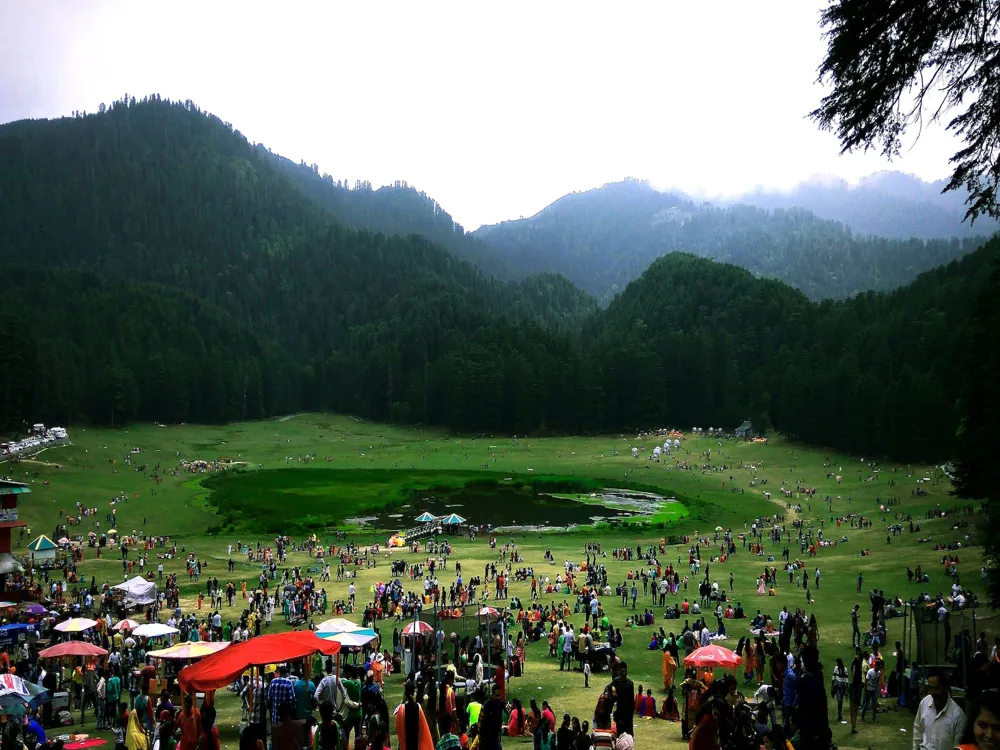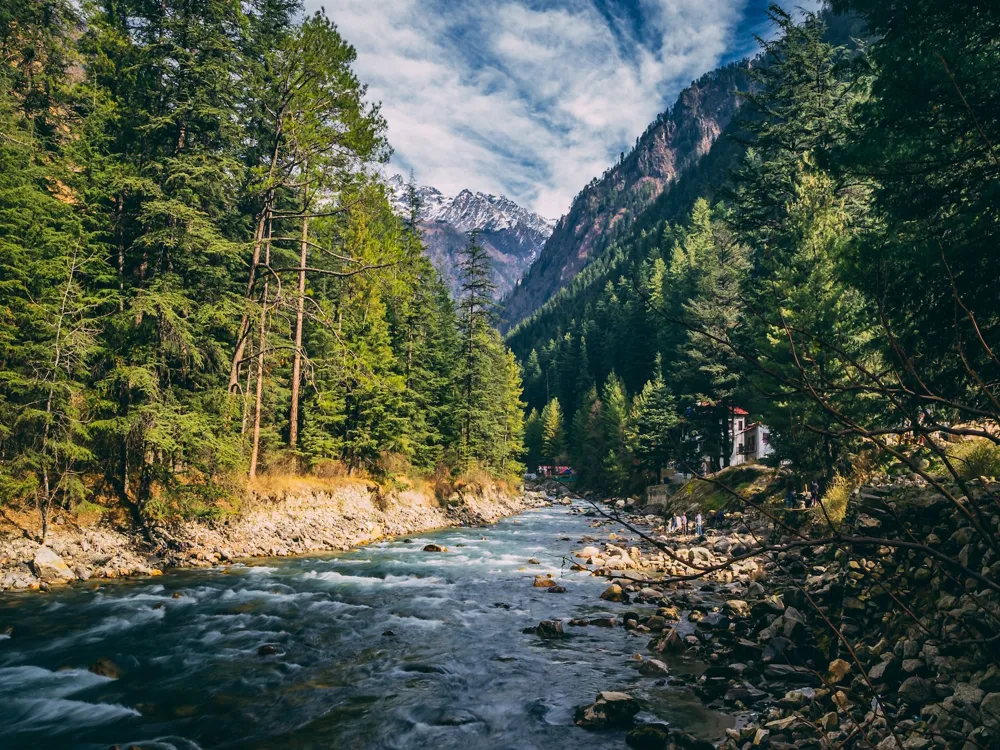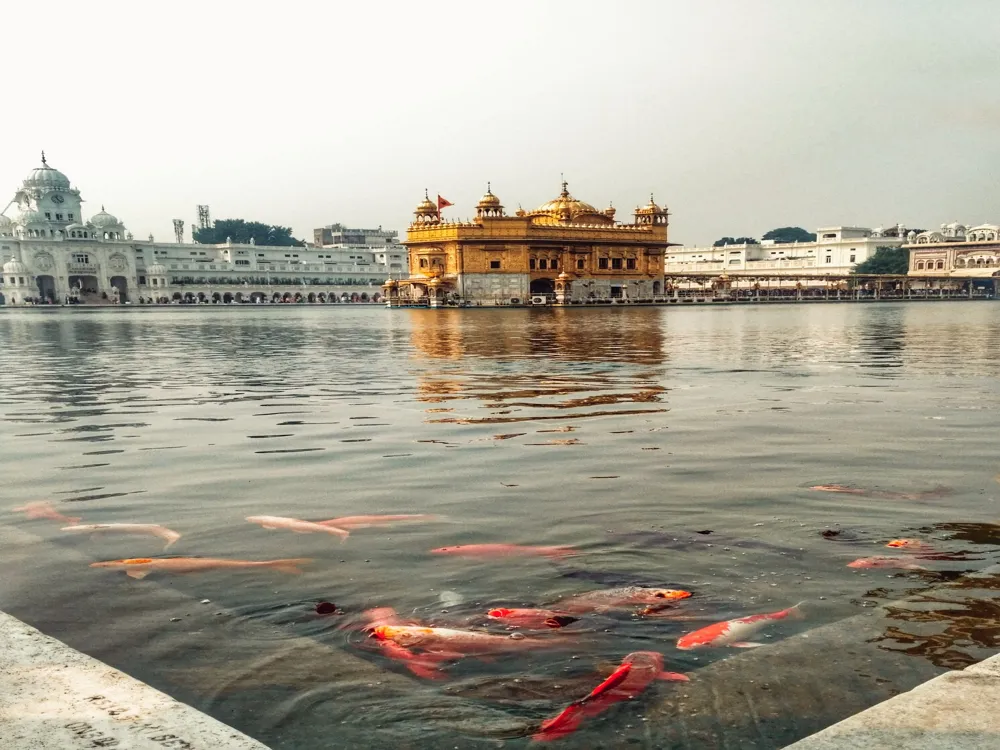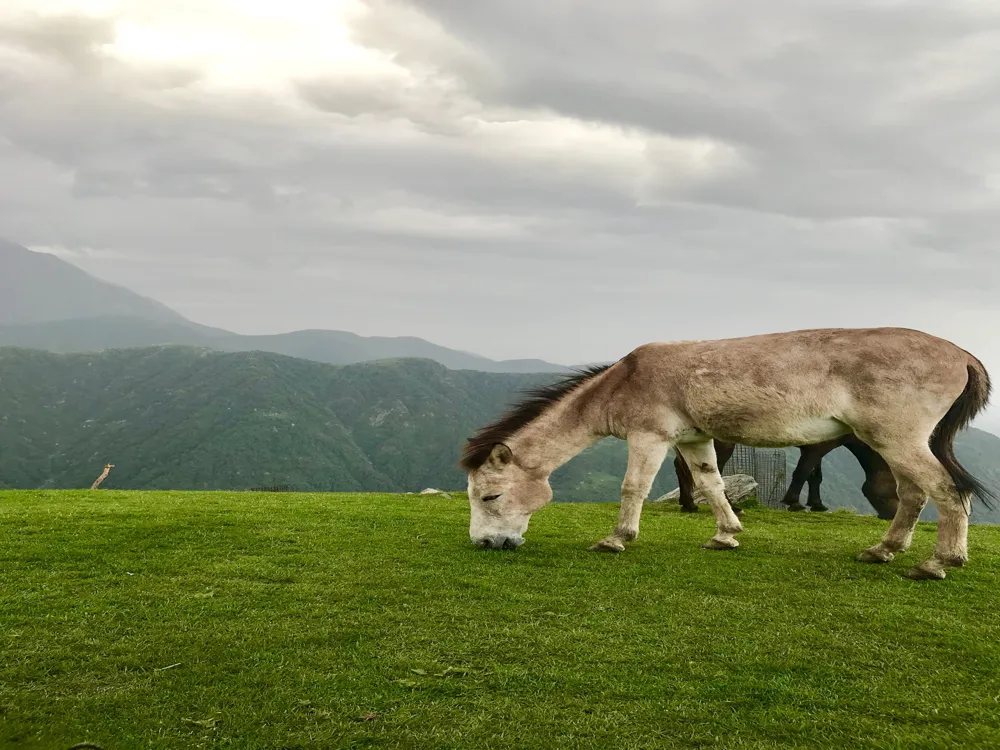The Khajji Nag Temple, nestled in the picturesque Khajjiar in Himachal Pradesh, is an ancient sanctuary dating back to the 12th century. Renowned for its intricate wood carvings and a serene ambience amidst the cedar forests, it stands as a testament to the architectural brilliance of the era. Dedicated to Khajji Nag, a serpent deity, the temple is an epitome of local beliefs and traditions interwoven with history. The temple's architecture is a beautiful amalgamation of Hindu and Mughal styles, featuring a distinctive wooden structure with elaborate carvings. The sanctum houses idols of Khajji Nag along with other deities, surrounded by wooden pillars that depict various mythological scenes. The blend of the slanted slate roof and the wooden facade contributes to its unique aesthetic appeal, making it a must-visit for architecture enthusiasts. 1. Dress conservatively as a mark of respect to the religious site. Khajji Nag Temple in Khajjiar is well-connected by road. The nearest airport is in Dharamshala, approximately 120 km away, and the closest railway station is in Pathankot, about 95 km distant. From these points, taxis or buses can be taken to reach Khajjiar. The journey offers scenic views of the Himalayan landscape, making the travel experience as enriching as the destination itself. Read More:Overview for Khajji Nag Temple of Khajjiar, Himachal Pradesh
Architecture of Khajji Nag Temple
Tips When Visiting Khajji Nag Temple
Click for Travel Tips
2. Carry a camera to capture the scenic beauty and the temple's intricate designs.
3. Visit during early morning or late afternoon to avoid crowds.
4. Engage with local guides to gain deeper insights into the temple's history.
5. Check the weather forecast and plan your visit accordingly, especially during monsoons.How To Reach Khajji Nag Temple
Khajji Nag Temple
Khajjiar
Himachal Pradesh
₹ 7,499 onwards
View khajjiar Packages
Weather :
Tags : Temple
Opening Hours : 6:00 am to 8:00 pm
Best Time To Visit: April to July
Nearby Places To Visit: Daikund Peak, Laxmi Narayana Temple, Golden Devi Temple
How To Reach: Accessible by road from Dalhousie, visitors can cover the distance via taxis and buses, ensuring a convenient journey to this historical and sacred destination.
Planning a Trip? Ask Your Question
Khajjiar Travel Packages
View All Packages For Khajjiar
Top Hotel Collections for Khajjiar

Private Pool

Luxury Hotels

5-Star Hotels

Pet Friendly
Top Hotels Near Khajjiar
Other Top Ranking Places In Khajjiar
View All Places To Visit In khajjiar
View khajjiar Packages
Weather :
Tags : Temple
Opening Hours : 6:00 am to 8:00 pm
Best Time To Visit: April to July
Nearby Places To Visit: Daikund Peak, Laxmi Narayana Temple, Golden Devi Temple
How To Reach: Accessible by road from Dalhousie, visitors can cover the distance via taxis and buses, ensuring a convenient journey to this historical and sacred destination.
Planning a Trip? Ask Your Question
Khajjiar Travel Packages
View All Packages For Khajjiar
Top Hotel Collections for Khajjiar

Private Pool

Luxury Hotels

5-Star Hotels

Pet Friendly






















